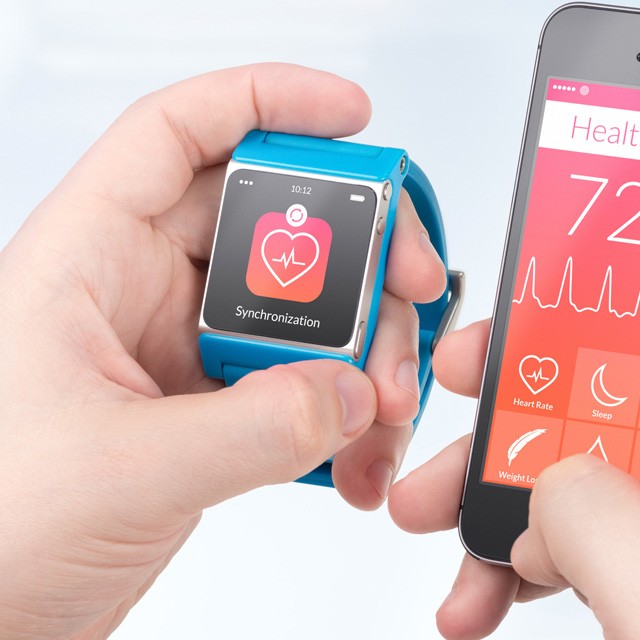

Watch out … technology may be advertisers’ ultimate spyware
In the last century, technological advancement has changed our lives dramatically. We are able to manage our bank accounts while watching TV, buy our clothes without leaving the house, and call a cab by pressing a single button. We use technology to make everyday chores virtually effortless. Online spending behavior has become an integral part of our lifestyle. The change enacted in our daily lives is vast and has diminished the gap between humans and technology. Tracking people’s behavior at any time while at the same time connecting it to detailed information, such as their interests, location, surfing behavior and socio-demographic characteristics, gives advertisers an overload of information. This information is already used in myriad ways, but we’re about to go a step further …
Let’s say, regardless of privacy issues, that a brand could respond to your different emotional and physical states throughout the day. How would you feel about that? For example, your watch senses you you’re a bit hungry. You get a notification that there’s a McDonalds 200m down the road. Your watch senses you’re nervous about that dinner with your mother-in-law you’ve scheduled for tonight. A notification pops up: there’s a flower shop around the corner. Relaxing and watching a movie: ‘How about ordering a pizza?’ This phenomenon is called Emotion-Based Target Advertising. Sounds too far-fetched? Think again!
Smart devices can make smarter advertising
Today, smartphones already give advertisers access to a trove of information, compiling big data such as consumer location, browsing history, purchase history and time of day to build accurate user profiles. The technology we use on a daily basis already provides a window into our lives.
But with the introduction of smart watches and personal fitness devices, companies can get to know you better than anyone. They can access your physical and emotional state at any time of day or night. If used wisely, these data are a precious resource for advertisers. In order to create extremely accurate individual propositions, advertisers must find the right balance between ethical and desirable behavior. Advertisers can create ads that respond perfectly to an individual’s fluctuating biometric data. Brand experiences can be measured and adjusted instantly if the correct information is at hand. As a consumer, this means you’re being offered products and services without even realizing you were craving them. By triggering your emotions and responding accordingly, brands can take advantage of price inelasticity.
The technology for this kind of advertising has not yet been developed. Apple, for example, has recently filed a patent for a hypothetical system that would analyze and define people’s moods based on a variety of cues, including facial expressions, perspiration rates and vocal patterns.
The methods for interpreting this data in context, however, are still in their infancy.
Contextual data, not just data
Although brands are already able to approach advertising behavior differently, none has had the balls to really go for it. The reason for this is simple. The technology needed to measure this data is not the issue; the problem is reading data in the right context. In a lab, it is easy to verify whether the measured data is accurate. But if a customer walks in a store and his heart rate increases when looking at your product, there’s no way of telling whether he’s feeling excited, shocked by the price or maybe just sick. The same goes with micro expressions. Does this woman like the perfume, or does it remind her of a beloved aunt in Western Australia?
Without having the right insight into the context of medical and biometrical data, chances are you’re going to shoot blanks half the time and convey the wrong message. That’s a risk advertisers just won’t take. There is still a long way to go before this kind of data is truly useful to advertisers. Knowing that someone’s heart rate is elevated is one thing; being able to correctly interpret and use that data to devise an effective ad is something else entirely. It’s inevitable that this type of advertising will be coming our way, but the question remains as to whether the benefits for the consumer will be proportional to the benefits for the advertiser. It will benefit consumers if brands use contextualized data to significantly improve service, giving consumers a reason to talk about and recommend the brand to their peers. In such cases, marketers can use this perpetum of word-of-mouth to communicate towards a broader audience.
Technology taking over marketing
At Brandhome we believe technology is taking over traditional marketing.
Marketing is being crushed between technological advance of unprecedented speed and an astonishing shift in consumer behavior worldwide. This means it’s Game Ov3r for traditional marketing techniques. Being a successful marketer will be all about adapting successfully to the rapidly changing environment. Embracing change and looking for ways to use that change to your advantage. Do you want your brand to anticipate this major shift? Read about it in Erik Saelens’ new book Game Ov3r, the end of marketing as we know it.


